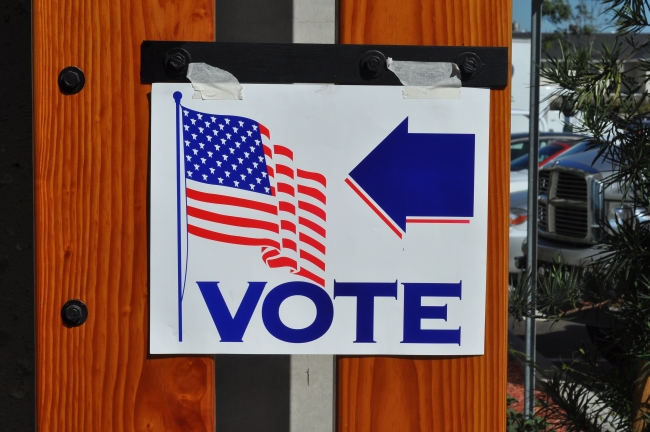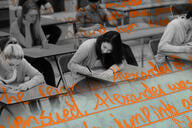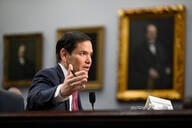You have /5 articles left.
Sign up for a free account or log in.

Wikimedia Commons
Before last year’s midterm elections, GOP politicians were derided for their apparent attempts to suppress the vote of college students, whose views tend to swing liberal.
But some of the barriers students encounter in voting -- confusion over registration deadlines, state voter identification laws -- would likely crumble with the massive election reform package the House of Representatives passed earlier this month.
HR 1 -- named for its prominence in the House Democrats’ agenda -- passed 234 to 193 along party lines and has been controversial for the major electoral shifts it would bring about: automatic voter registration, restoration of the voting rights of those who have served felony sentences and the creation of a public finance system, which would give congressional and presidential candidates a six-to-one match for small donations.
Some of the bill’s less recognized provisions specifically focus on college students, and activists and elections experts said in interviews that the legislation would generally benefit students. However, a Republican-controlled Senate, which has made clear its disdain for the bill, all but guarantees it will not advance.
“But I think what is exciting about the legislative effort and the focus on this is that it’s an important start to ensure that college campuses and students are engaged in the civic environment and recognize what’s going on,” said Mark D. Gearan, director of Harvard University's Institute of Politics.
The lengthy bill includes pieces of a proposal by Cory Booker, the New Jersey Democratic senator and presidential hopeful, and Congressman Raja Krishnamoorthi, a Democrat from Illinois. Parts of their legislation, the Help Students Vote Act, were folded into HR 1 and demand that colleges and universities designate a “campus vote coordinator” who would remind students of upcoming elections and registration deadlines. It also allows both public and private institutions to apply for federal grants to beef up their voter engagement efforts.
“This is a monumental step forward for student voting,” Krishnamoorthi said in a statement. “When students begin college each year, often having never voted or even registered to vote, they frequently lack the institutional support and resources to navigate the voting process.”
Gearan said that students need these consistent reminders, particularly considering their schedules and the likelihood that they have never voted before.
As a part of the 1998 reauthorization of the Higher Education Act, colleges and universities already have to make a “good faith effort” to distribute voter registration forms and make them available to enrolled students. The 2008 Higher Education Opportunity Act allowed colleges and universities to meet this requirement digitally, so they can merely send an email to students with a state’s voter registration information.
But the problem with just blasting out an email is that students may not know what to do with a registration form, said Elizabeth A. Bennion, professor of political science and campus director of the American Democracy Project at Indiana University South Bend. In a 2010 study, published by the journal Political Research Quarterly, Bennion tested how an email reminder would boost registration rates among nearly 260,000 students at 26 four-year colleges. Some were randomly sent a PDF form, but Bennion found the emails didn’t increase the number of students who registered.
A separate study she conducted in 2016 showed though that classroom presentations, either by a professor or student, did raise registration rates by six percentage points.
“Instead of sending one email and washing their hands of a problem by just meeting their legal requirement, I think this legislation could prove useful to hold institutions accountable,” Bennion said, emphasizing the provision about the campus voting coordinator.
College students are already one of the more difficult populations to shepherd to the polls, she said. They are transient and move both from out of town and state and around campus -- often annually during the four or more years college.
For that reason, unless the state where they’re attending college allows for same-day registration, students are easily disenfranchised during election season, Bennion said. The bill requires states to allow voters to register on the day of a federal election.
HR 1 designates colleges and universities as voter registration agencies -- meaning that they have to offer students the opportunity to register to vote through them. This is mostly positive, said Mike Burns, national director for the Campus Vote Project, a nonpartisan offshoot of the Fair Elections Legal Network. But with the bill also requiring automatic voter registration, colleges would need to be updated on students’ addresses, which students might not always follow through with -- and so the institutions could be sending incorrect information to voter rolls.
Burns praised the idea of a campus coordinator and more grant money for student voting initiatives.
States that require identification to vote can complicate the process for students, too. Generally, the lawmakers who pass these laws maintain that they’re trying to eliminate election fraud, though research shows that these restrictions can inhibit voting among populations who can’t afford an ID. College students could also be lumped into this category because it can be cumbersome for them to obtain IDs in certain states, especially as temporary residents. Some states also don’t allow students to use their college IDs -- Tennessee, for instance.
HR 1, dubbed the For the People Act, weakens state voter ID laws by allowing citizens to just sign a form that confirms their identity when voting.
College students are also among the groups that have the lowest turnout in elections.
Data from Tufts University, which runs the largest analysis of student voting in the country, showed that only 18 percent of college students voted in the 2014 midterm election. Voting records for the 2018 midterms haven’t all been certified yet, so Tufts’ study -- the National Study of Learning, Voting and Engagement -- hasn’t put together its report, said Nancy L. Thomas, director of the university’s Institute for Democracy and Higher Education. But preliminary information from other sources, including the ALL IN Campus Democracy Challenge, suggests that voting was up by 10 percent from the 2014 midterm.
One recent college graduate, Julia McCarthy, spent one of her last semesters at Marist College trying to stoke political activism on campus. McCarthy, who graduated from the New York private college in the fall, described the student body as politically apathetic. As a part of her final project in the honors program, she developed a campaign called Marist Votes, in which she concentrated on boosting student voting through absentee ballots. She said that many students had registered to vote, but plenty didn’t follow through with actually getting to the polls.
In October, the month before last year’s midterm, McCarthy set up tables around campus with 50 volunteers she had trained. Those students helped their classmates figure out how to vote absentee. The volunteers helped locate an absentee ballot request form online, mostly from the states that border New York, and help the students fill it out if necessary. Then they would collect the form, address it the correct source and mail it. McCarthy said they gathered and mailed more than 400 absentee forms.
She said the project helped her realize how difficult voting absentee can be for students. Students don’t often mail much, and she said she was glad that HR 1 required the United States Postal Service to carry absentee ballots free of charge.
The bill also forces the Election Assistance Commission to reimburse states that establish tracking programs for absentee ballots.
“Young people don’t mail things … it sounds silly, but it would make a huge difference,” McCarthy said of the bill.
Zaneeta Daver, executive director of the Democracy Challenge, which publicly acknowledges colleges and universities for civic engagement efforts, said that her group and others are trying to “change the culture” around voting for students -- which the new House bill can assist with.
Administrators can hold registration drives or other initiatives around major election years, but even off cycle, they should do more to encourage students to care about the issues, Daver said.
“The climate in the country right now is spurring everyone to action; everyone is becoming more activated and institutions are becoming more activated in promoting democracy,” she said.
Thomas, of Tufts, said that HR 1 is an important step toward making the electoral system more equitable and accountable and said that it provides a launch pad for efforts to reform elections at the state level.
“We view unjust electoral systems as both a challenge and an opportunity for higher education. The challenge is to help students know their civil rights and help them overcome statutory and nonstatutory barriers to voting,” Thomas said. “The opportunity? The proverbial teachable moment for students to learn how to reform laws and systems by discussing and envisioning new policies and pitching them to legislatures or as ballot initiatives.”




